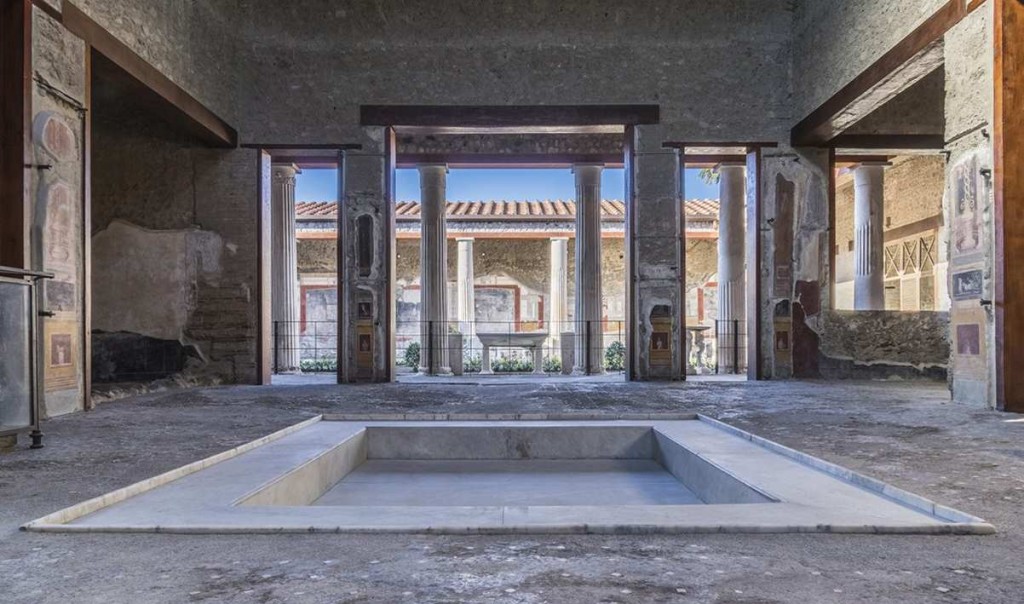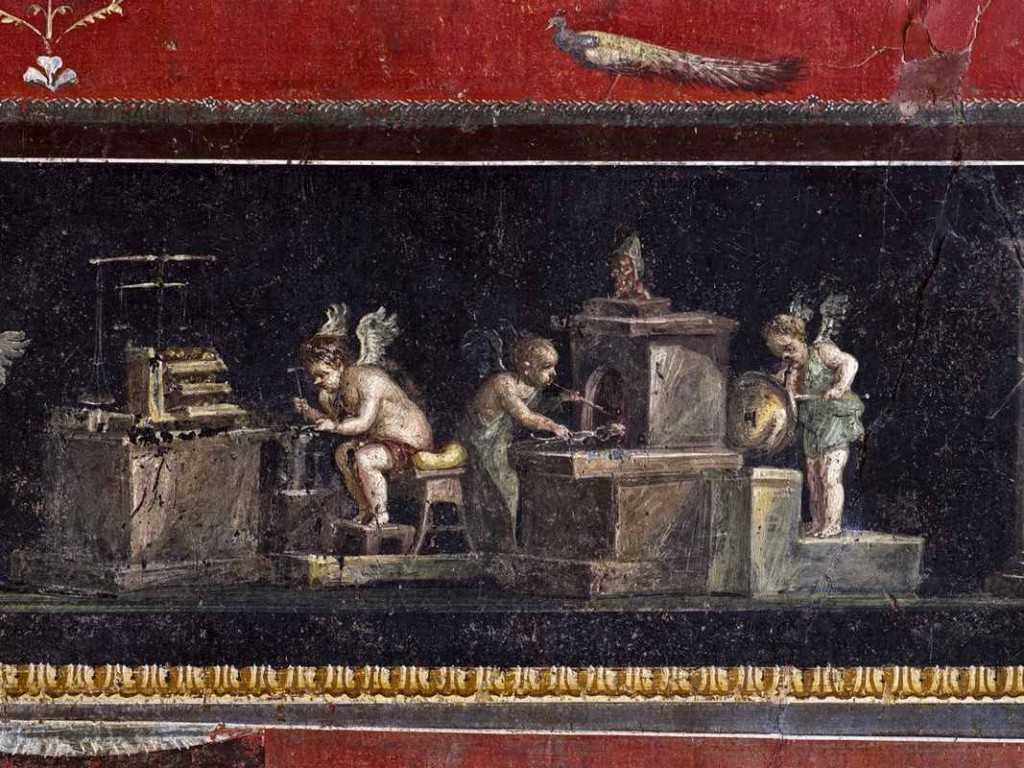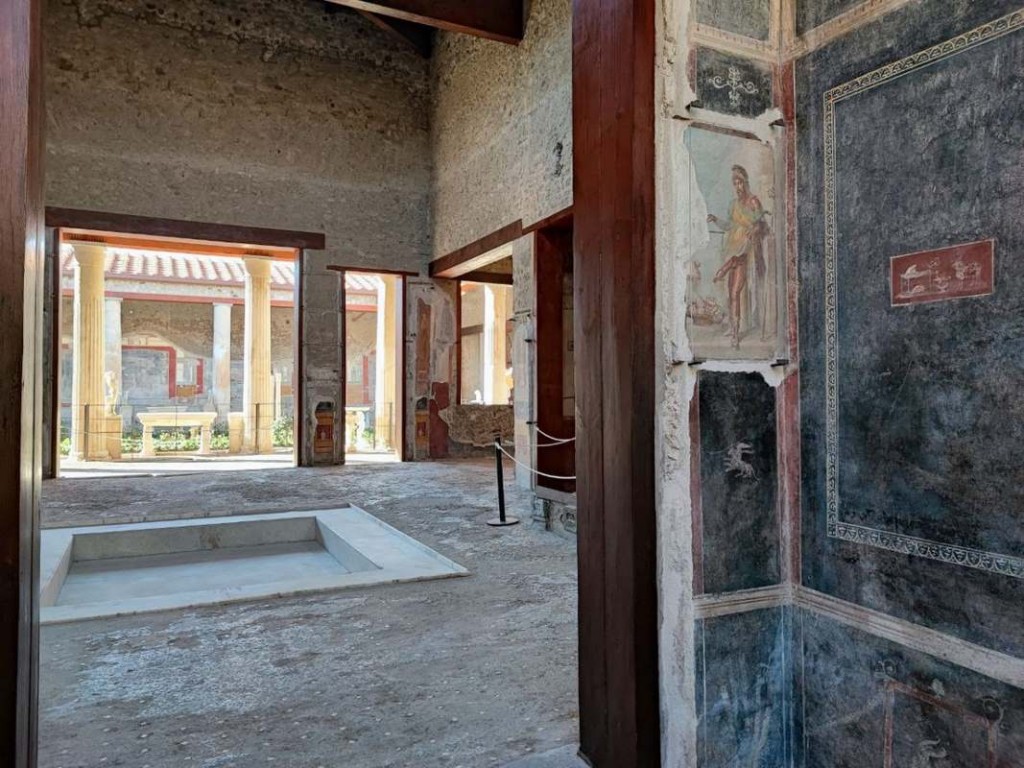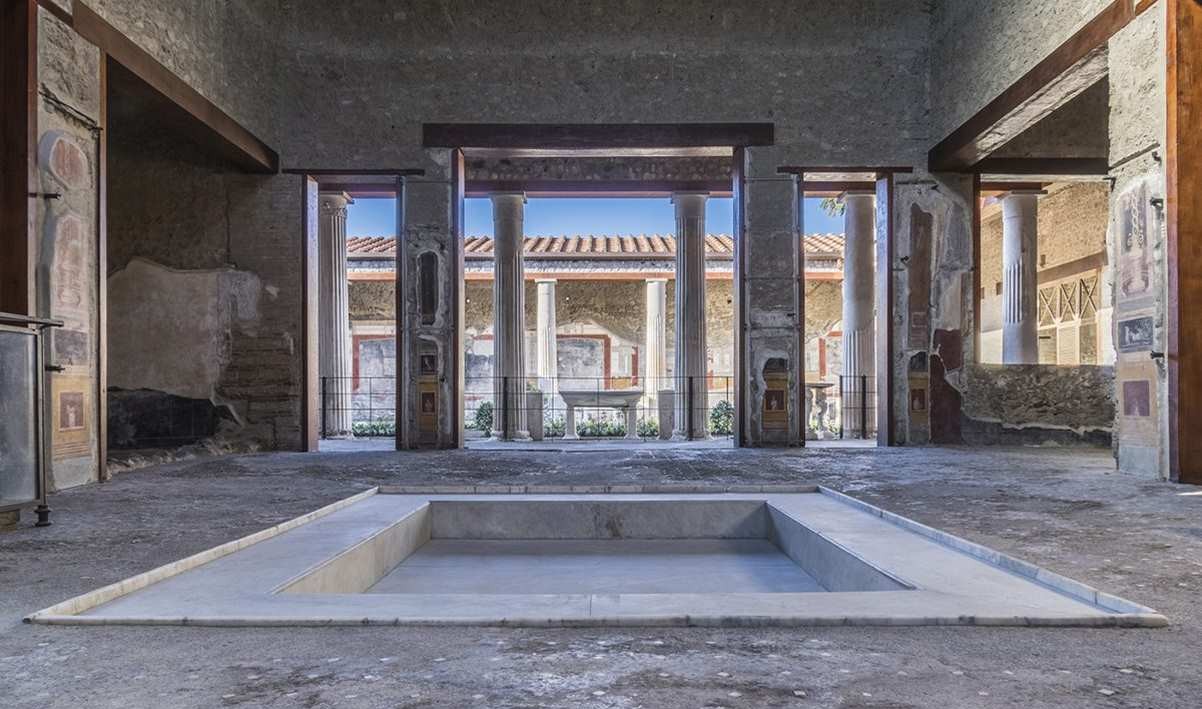
After years of complex restoration work, the villa of two of Pompeii’s richest citizens has been reopened.
Buried by Vesuvius in 79 CE, the House of the Vettii “tells the story of Roman society,” with elegant frescoes flaunting the wealth accumulated in the wine business by two freed slaves.
Their names were Aulus Vettius Restitutus and Aulus Vettius Conviva, and rather than being brothers, it was more likely based on Roman naming customs that they were buddies in slavery to a master named Aulus Vettius.
Whenever they returned as freedmen, they amassed a great fortune with which they bought a house in Pompeii’s wealthy district and filled it with art. The home is protected by the god Priapus—god of fertility, displayed in a wall frieze and marble statue with a comically-large phallus.
Inside, the walls are lined with a large frieze of Cupids doing craftwork, probably representing the business the two men owned, and of other deities like Neptune (Poseidon the god of the sea).
The focal point of the dwelling is a large square garden filled with water fountains and statues.
RELATED: Piece of Ancient Graffiti Reveals New Clues About the Day Pompeii Was Destroyed
In a room beyond the kitchen it’s believed the two men ran a brothel, as the decorations became a lot raunchier. Next to Priapus at the entrance is a small inscription in Latin which refers to a Greek woman with “nice manners.”


It seems the men who had whittled away some years in slavery were not going to waste any time missing out on a chance to enrich themselves.
Gabriel Zuchtriegel, director of the Pompeii Archaeological Park, told the Guardian that if there were one house he could visit in a time machine before the famous volcano buried the city, it would be the House of the Vettii, describing the number of treasures uncovered within as “absolutely astonishing.”
MORE ARCHAEOLOGY NEWS: Exquisite Mosaic Unearthed by Farmer Planting Olive Tree, ‘Perfectly Preserved’ From Byzantine Era
This is the house which tells the story of Roman society,” he said. “On the one hand you have the artwork, paintings and statues, and on the other you have the social story [of the freed slaves]. The house is one of the relatively few in Pompeii for which we have the names of the owners.”
SHARE This Astonishing House And Story With Your Friends…




















